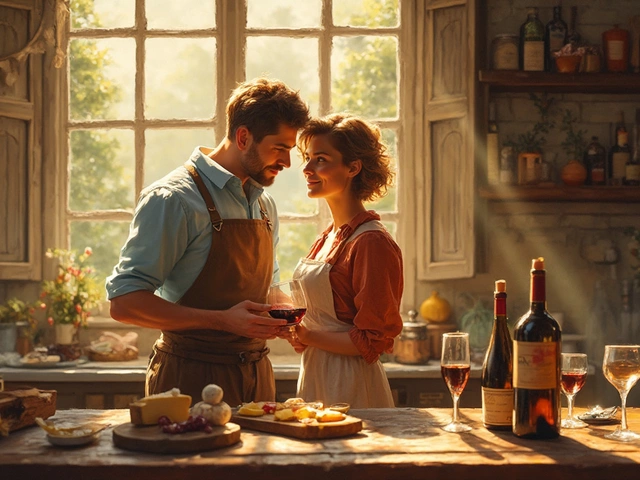Spirits Flavor: How to Taste, Pick, and Enjoy Your Favorite Drinks
Ever wondered why some whiskies taste smoky while others feel sweet? Or why a gin can be floral one minute and piney the next? It all comes down to flavor. Knowing the basics makes tasting more fun and helps you pick bottles you’ll actually love.
Start with the Basics of Tasting
First, grab a glass and a splash of water. The water helps open up the spirit and shows hidden notes. Swirl, then sniff. Ask yourself: does it smell fruity, spicy, or earthy? Take a small sip and let it roll across your tongue. Notice the first impression, the middle body, and the finish. That three‑step pattern works for whisky, gin, rum, and even vodka.
Common Flavor Families in Popular Spirits
Whisky – Look for oak, vanilla, caramel, smoke, or fruit. A Scotch from Islay will hit you with sea‑salt and peat, whereas a Kentucky bourbon leans toward honey and caramel.
Gin – The main note is juniper, but you’ll also find citrus, cucumber, or floral herbs. A London dry gin stays crisp, while a New Western gin can be more citrus‑forward.
Rum – Light rums taste clean and a bit sweet, while dark rums bring caramel, molasses, and spices like cinnamon or nutmeg.
Vodka – Good vodka is neutral, but you can still pick up grain, pepper, or subtle citrus. Look for smoothness and a clean finish.
Understanding these families helps you zero in on the flavors you like and skip the ones you don’t.
Now that you know the flavor families, try a simple exercise: pick two spirits you’ve never tried and compare them side by side. Note which aromas stand out and which textures feel smoother. You’ll start to build a personal flavor map without any fancy training.
When you’re comfortable with tasting, think about pairing. A smoky whisky goes well with smoked cheese or dark chocolate, while a bright gin matches citrus salads or seafood. Matching flavors amplifies both the drink and the food, making every sip feel intentional.
Storage matters, too. Keep spirits away from direct sunlight and extreme temperatures. A dark cabinet or a closet works fine. For bottles you open often, a smaller decanter can help reduce air exposure, keeping flavors fresh longer.
If you enjoy mixing, use what you learned to craft better cocktails. Want a gin cocktail that highlights floral notes? Choose a gin with cucumber and add a splash of elderflower syrup. Want a whisky cocktail that feels richer? Use a whisky with caramel and add a dash of orange bitters.
Lastly, don’t be afraid to experiment. Try a spirit you’d never pick based on its label and see how it surprises you. Some of the best discoveries happen when you step outside your comfort zone.
With these simple steps—sniff, sip, note, pair, store, and experiment—you’ll get more out of every bottle. Happy tasting!
Not all alcohol tastes good straight, and that's where great mixers make a difference. This article breaks down the best things to mix with your favorite spirits, from classics like cola and juice to unexpected combos that'll surprise you. Get tips for balancing flavors and learn which ingredients can actually make your drinks taste smoother. It's all based on real experience—forget the pretentious stuff, just easy ways to upgrade your drink. Perfect for your next get-together or quiet night in.
View Details

